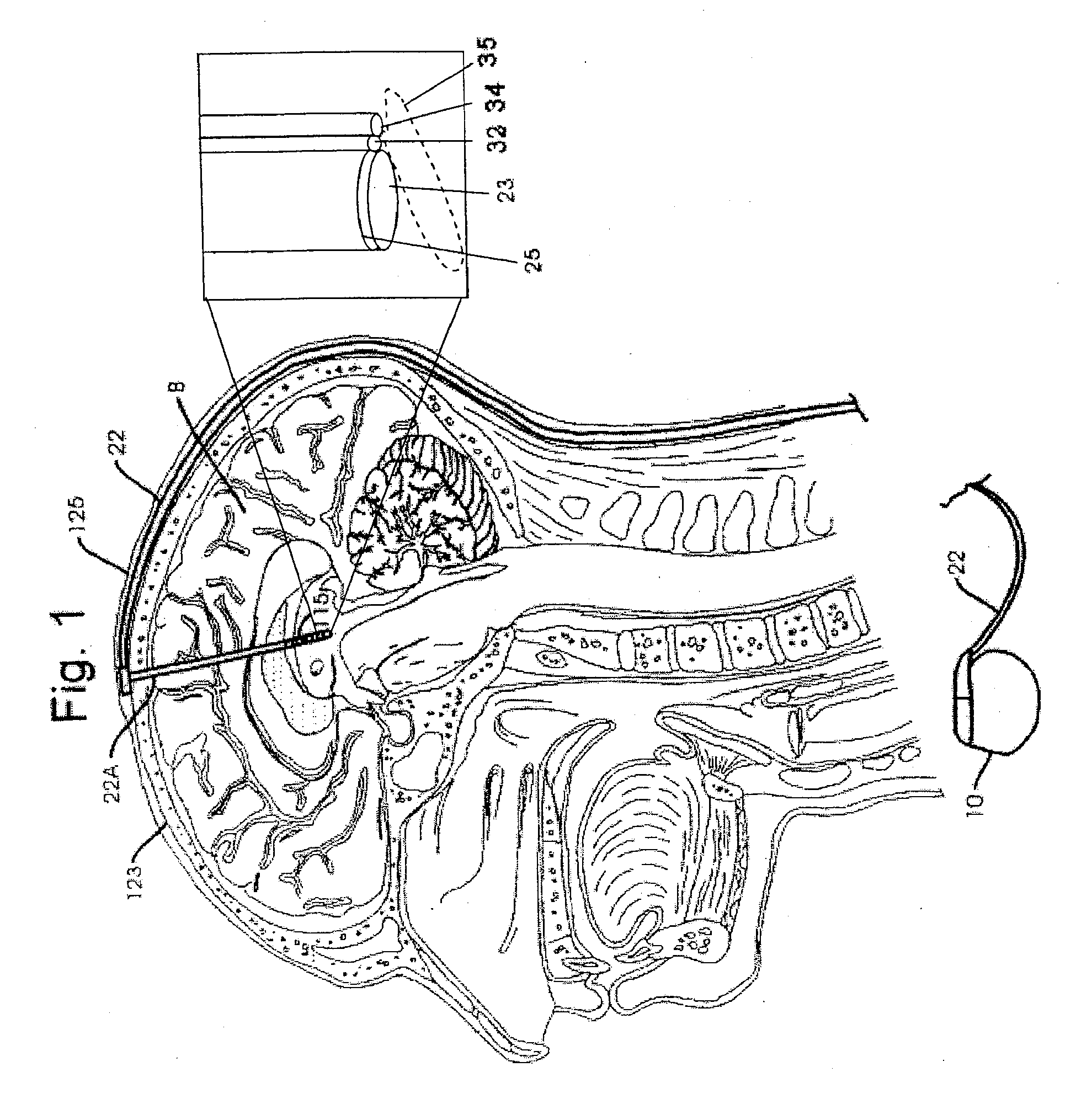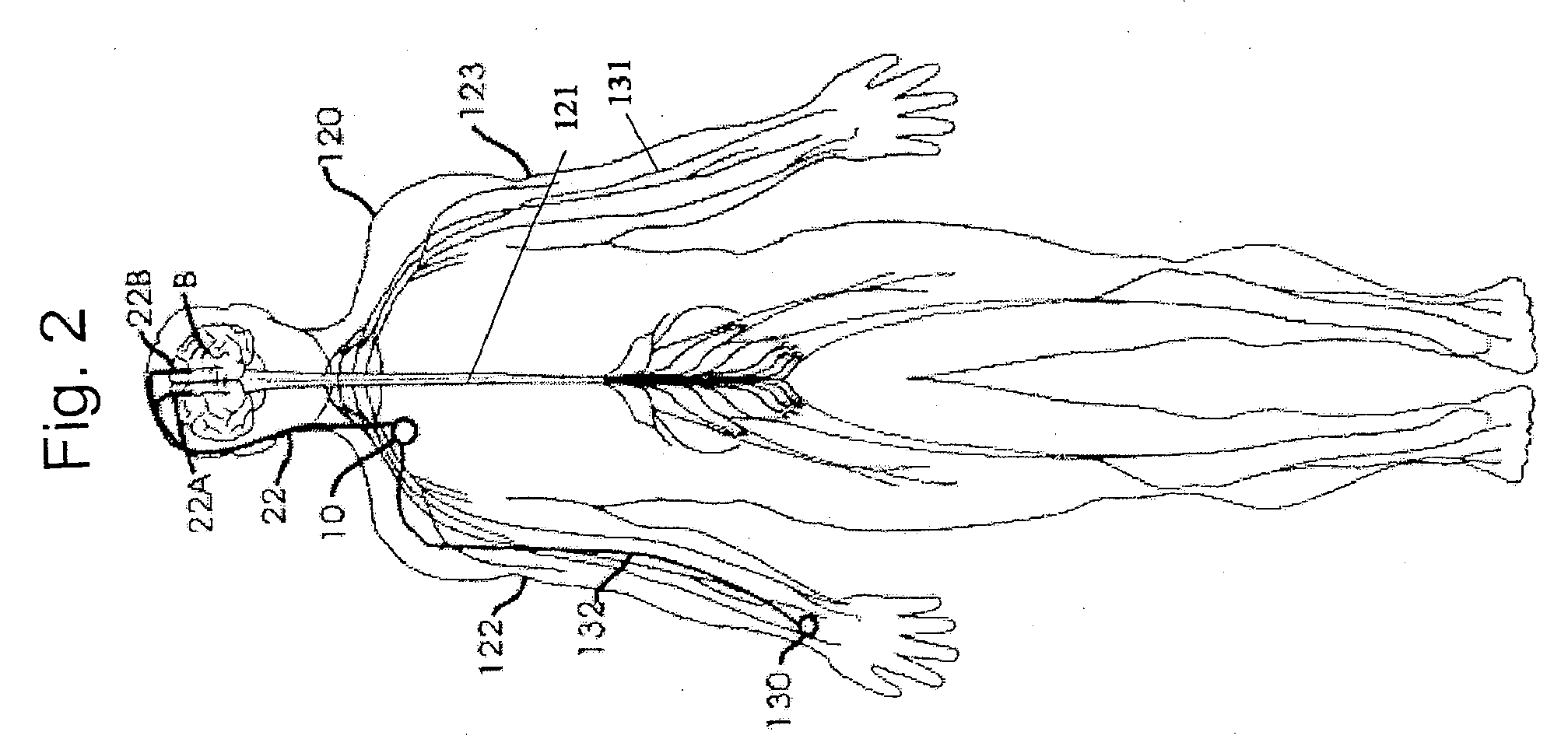Applications of the stimulation of neural tissue using light
a neural tissue and light technology, applied in the field of nerve system stimulation, can solve the problems of difficult to record electrical activity from the neuron, non-specific stimulation of neurons or damage of neurons, and the technique does not easily lend itself to implantable electrodes used for long-term stimulation of neural tissue, etc., to achieve the effect of increasing the electrical field size and high specificity
- Summary
- Abstract
- Description
- Claims
- Application Information
AI Technical Summary
Benefits of technology
Problems solved by technology
Method used
Image
Examples
example experimental preparation
[0118]One example of the use of this invention is to use the rat sciatic nerve for frog isolated nerve preparation, as described in U.S. Pat. No. 6,921,413, for the target tissue which may serve as an example of its application. One of ordinary skill in the art understands the differences in the surgical procedure necessary to expose the Rat sciatic nerve. Regarding the stimulation of the Rat sciatic nerve, a wavelength of 4.4 micrometers, and energy of 4.7 mJ, a spot size of 619 micrometers, and a pulse frequency of 2 Hz using the FEL may be used. Optical stimulation may also use an energy of 39 mJ, 1.78 mJ, and 2.39 mJ.
[0119]The present invention described herein provides methods of stimulating target tissue with optical energy. In other embodiments, the present invention provides a method of stimulating neural tissue by providing a source capable of generating an optical energy having a wavelength in a range of from 3 micrometers to 6 micrometers at an energy output in a range fr...
PUM
 Login to View More
Login to View More Abstract
Description
Claims
Application Information
 Login to View More
Login to View More - R&D
- Intellectual Property
- Life Sciences
- Materials
- Tech Scout
- Unparalleled Data Quality
- Higher Quality Content
- 60% Fewer Hallucinations
Browse by: Latest US Patents, China's latest patents, Technical Efficacy Thesaurus, Application Domain, Technology Topic, Popular Technical Reports.
© 2025 PatSnap. All rights reserved.Legal|Privacy policy|Modern Slavery Act Transparency Statement|Sitemap|About US| Contact US: help@patsnap.com



